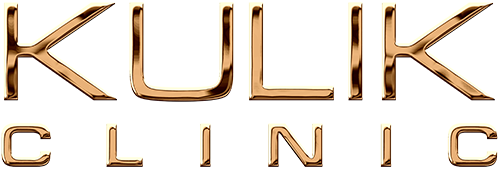Taking care of your body and health often leads us to specialists who work with their hands. However, when faced with terms like “manual therapist,” “osteopath,” and “massage therapist,” it’s easy to get confused. Who can help you specifically? In this article, we will break down the key differences between these professionals so you can make an informed choice.
Massage Therapist: Relaxation and Superficial воздействие
Massage is perhaps the most well-known and widespread manual therapy for the body. The main goal of a massage therapist is to relax muscles, improve blood and lymph circulation, relieve superficial tension, and reduce pain associated with muscle strain.
Key Characteristics of a Massage Therapist:
- Focus: Primarily works with soft tissues – muscles, ligaments, fascia.
- Techniques: Uses various techniques such as stroking, rubbing, kneading, vibration, and percussion.
- Depth of воздействие: Usually superficial or moderately deep воздействие on muscles.
- Diagnosis: Generally does not engage in deep diagnosis of the causes of pain and movement restrictions. Works based on a doctor’s referral or the client’s complaints.
- Education: Massage courses of varying lengths. Medical education is not always required.
- Goal: Reducing muscle tension, improving circulation, general relaxation, reducing local pain.
Osteopath: Holistic Approach and Restoring Structure
Osteopathy is a healthcare system that emphasizes the structural and functional integrity of the body and its inherent ability to self-regulate. The main goal of an osteopath is to identify and address the root cause of dysfunction by restoring the natural mobility of the body’s tissues and structures, including bones, muscles, ligaments, fascia, and internal organs.
Key Characteristics of an Osteopath:
- Focus: The interconnectedness of all body systems, searching for the primary cause of dysfunction at a structural level.
- Techniques: Uses gentle manual techniques, including joint mobilization and manipulation, myofascial release, visceral techniques (directed at internal organs), and craniosacral techniques ( воздействие on the bones of the skull and sacrum).
- Depth of воздействие: Can be both superficial and deep, depending on the technique and the treatment goal.
- Diagnosis: Conducts a thorough diagnosis, including taking a history, visual examination, palpation, and functional tests to identify structural imbalances and movement restrictions.
- Education: Lengthy and in-depth training in specialized osteopathic schools or institutions, often with a medical background.
- Goal: Addressing the root cause of pain and dysfunction, restoring natural mobility and the body’s self-regulatory mechanisms, improving overall health.
Manual Therapist: Focus on the Musculoskeletal System
Manual therapy is a set of hands-on techniques aimed at restoring the function of the musculoskeletal system, primarily the spine and joints. The main goal of a manual therapist is to eliminate functional blocks, muscle spasms, and pain syndromes associated with disorders of the spine and joints.
Key Characteristics of a Manual Therapist:
- Focus: Diagnosis and treatment of diseases and dysfunctions of the musculoskeletal system.
- Techniques: Uses both soft tissue techniques (mobilization, myofascial release, muscle energy techniques) and high-velocity, low-amplitude (HVLA) thrust techniques (manipulations).
- Depth of воздействие: Varies from superficial to deep, including воздействие on bony structures.
- Diagnosis: Conducts a thorough diagnosis, including taking a history, visual examination, palpation, neurological, and orthopedic tests to identify problems in the spine and joints.
- Education: Typically has a higher medical education (neurologist, orthopedist-traumatologist) and has undergone additional specialization in manual therapy.
- Goal: Eliminating pain and movement restrictions associated with dysfunction of the spine and joints, restoring the biomechanics of movement.
Comparative Table:
| Characteristic | Massage Therapist | Osteopath | Manual Therapist |
|---|---|---|---|
| Primary Focus | Soft tissues, relaxation | Holistic structure and function of the organism | Musculoskeletal system (primarily) |
| Main Techniques | Stroking, rubbing, kneading, etc. | Gentle mobilizations, manipulations, visceral, craniosacral | Gentle mobilizations, high-velocity manipulations |
| Depth of воздействие | Superficial to moderately deep | Superficial to deep | Superficial to deep (including bony structures) |
| Diagnosis | Assessment of complaints, superficial palpation | Deep structural and functional diagnosis | Deep diagnosis of the musculoskeletal system |
| Education | Massage courses | Lengthy, specialized training | Higher medical education + specialization |
| Primary Goal | Relaxation, improved circulation, reduced muscle tension | Addressing the root cause of dysfunction, restoring self-regulation | Eliminating pain and restrictions in the musculoskeletal system, restoring biomechanics |
Who Should You See?
- Massage Therapist: If you need to relax, relieve muscle tension after exercise or a workday, improve circulation, or reduce localized muscle pain.
- Osteopath: If you are looking for a holistic approach to health problems, experiencing chronic pain, postural imbalances, headaches, problems with internal organs, or the effects of injuries. Osteopathy can be beneficial even for conditions that seem unrelated to the musculoskeletal system.
- Manual Therapist: If you are experiencing pain in the back, neck, or joints, limited mobility, herniated or bulging discs (as part of a comprehensive treatment plan), or the effects of musculoskeletal injuries.
Important Note:
The choice of specialist depends on your specific problems and preferences. All three disciplines can be beneficial but are suited for different situations. Always consult certified professionals with appropriate education and experience. If you have serious medical conditions, always consult with your doctor before seeking treatment from any of these specialists.
Hopefully, this article has helped you understand the differences between a manual therapist, osteopath, and massage therapist, and you can make the right choice for your health care.


